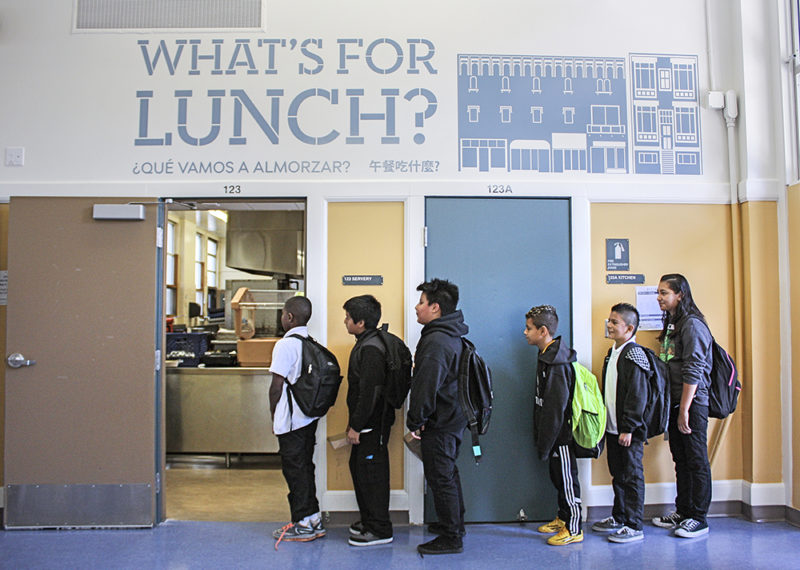
Share On Social!
In 2012, the Nutrition Standards in the National School Lunch and School Breakfast Programs were updated requiring schools to (1) increase fruits, vegetables, whole grains, and fatfree and low-fat milk; (2) reduce the levels of sodium, saturated fat and trans fat: (3) and meet calorie requirements.
According to the CDC School Health Policies and Practices Study:
- Almost all schools offered whole grains each day for breakfast (97.2%) and lunch (94.4%).
- Most schools offered two or more vegetables (79.4%, up from 61.7% in 2000) and two or more fruits (78.0%, up from 68.1% in 2000) each day for lunch.
- Nearly one-third (30.5%) of schools offered self-serve salad bars.
- More than half of schools that prepared their meals at the school used fresh or frozen vegetables instead of canned (54.1%), used low-sodium canned vegetables instead of regular canned vegetables (51.8%, up from 10.3% in 2000), used other seasonings instead of salt (65.1% up from 32.8% in 2000), and reduced the amount of sodium called for in recipes or used low-sodium recipes (68.0% up from 34.1% in 2000).
“School meals are healthier now than ever before,” said CDC Director Tom Frieden, M.D., M.P.H.
Nationwide, students consume almost half of their daily calories at school. Students living in Latino or underserved communities rely even more on school meals to obtain their daily calories. It is important to ensure that these students have access to healthy foods in school because they are typically burdened by more unhealthy marketing and more barriers to access healthy foods outside of school.
Learn more about the positive changes schools are implementing.
Explore More:
Healthy Families & SchoolsBy The Numbers
142
Percent
Expected rise in Latino cancer cases in coming years



